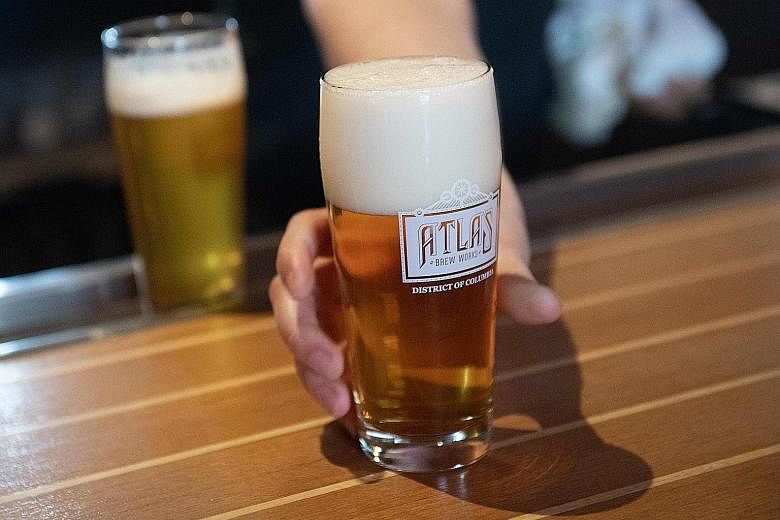WASHINGTON • In bars across the United States, one product - whether in bottles or on tap - has become an absolute necessity for maintaining "cool" status: India Pale Ales (IPAs).
Over the past 10 years, Mr Gene Barnett has worked in no fewer than seven bars in the nation's capital and the surrounding region.
Like many bartenders, he noticed an almost excessive thirst for IPAs, easily recognised by their marked bitterness, the result of a high hops concentration.
In his bar in the trendy U Street area in Washington, the most popular beer is an IPA. In a beer hall where he used to work, "we had 12 taps, and we would have three, four or five IPAs on tap, because there was such a huge demand for it", he said, sitting at a bar table.
In the beer family tree, IPAs make up only one small branch.
But "nobody was looking for your Pilsner; nobody was looking for your stout. They were looking for your IPA because that was what was moving at the time", said the 40-year-old bartender.
Although consumption has become so widespread that the beers can be found in any grocery store, IPAs are still particularly popular with one group: "Hipsters," said Mr Barnett, who has seen many pass through his bar, with a laugh.
These trendy young people can afford to pay a few dollars more for an often more alcoholic pint and appreciate the vast selection available to them.
"They want to be the first to put other people onto the IPAs," said Mr Barnett, who has even noticed a "collector" mentality among IPA fans.
COUNTER-CULTURE
IPAs were created in Great Britain at the end of the 18th century, gaining popularity as they were one of the few beers that could survive the trip to the Indian colonies and arrived in the US during the 1970s due to the rise of craft breweries.
"American beer drinkers were used to a beer that was very light and easy drinking, watery even," such as Budweiser or Coors, said Dr Theresa McCulla, a beer historian at the National Museum of American History in Washington.
It was a time of counter-culture, even in the consumption of daily goods.
"Some people were trying to eat and drink differently in a way that would signal a kind of independence from big businesses," Dr McCulla said.
And some of that came through by drinking "hoppy beers produced very locally by small producers". Though drinkers initially rejected IPAs as "just radically too bitter", they grew increasingly popular over the next several decades, reaching their peak in the 2010s.
"If there was a defining style of craft beer in the last 40 years, for sure it's been the IPA," said Dr McCulla, though she added the drink can be considered "not very subtle" due to its strong bitterness and can sometimes be viewed as "elitist" by new drinkers.
"You might feel a little bewildered and at a disadvantage if you don't know what to pick or how to drink it," she said.
Currently, she estimated there are about 8,000 breweries in the US, a number that will no doubt increase.
GOOD INTRODUCTION
Atlas Brew Works is one such brewery. Based in Washington, it was founded in 2013, when micro-breweries were sprouting up everywhere.
In the middle of work, standing among the 16 fermenters where production takes place, head brewer Daniel Vilarrubi said he made five IPAs last year - its most popular product - out of more than 20 beers produced.
"IPA is a good marketing term," he said, because it is a "good introduction to craft beer" for people who want more taste than just a Budweiser.
"Some people stick with IPAs and some people kind of expand from there."
For hardcore fans, as Mr Barnett pointed out, it can be hard to go back. Drinkers quickly adjust to a more pronounced taste and basic beers end up tasting "like water".
But as a brewer, Mr Vilarrubi would like to expand his repertoire. "It would be fun to kind of mess around and do some other, maybe less popular styles," he said.
AGENCE FRANCE-PRESSE

